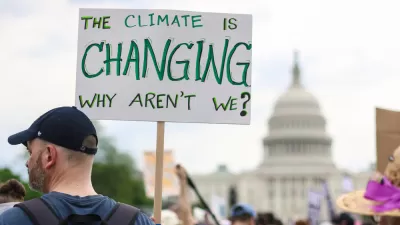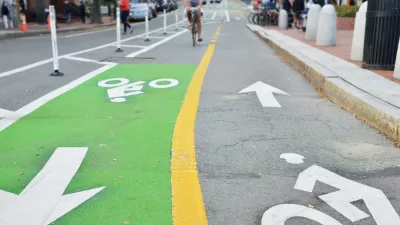As managing editor of Planetizen, I'd like to make a quick note on today's op-ed, Resisting Dickensian Gloom by Tony Recsei. Mr Recsei asked for a chance to respond to a recent criticism of his work by Planetizen regular Michael Dudley. It is our policy at Planetizen to allow points of view that are critical of the status quo in urban planning, so I agreed to run the piece. I did ask Mr. Recsei to tone down some of the more personal attacks on smart growthers so that his points could be presented more clearly to our audience, and I believe he has done that.
As managing editor of Planetizen, I'd like to make a quick note on today's op-ed, Resisting Dickensian Gloom by Tony Recsei. Mr Recsei asked for a chance to respond to a recent criticism of his work by Planetizen regular Michael Dudley. It is our policy at Planetizen to allow points of view that are critical of the status quo in urban planning, so I agreed to run the piece. I did ask Mr. Recsei to tone down some of the more personal attacks on smart growthers so that his points could be presented more clearly to our audience, and I believe he has done that.
I did do one bit of fact-checking, because I was interested in the work of the Australian Conservation Foundation, which Mr. Recsei cites. His interpretation is that inner-city residents of Australian cities create more greenhouse gas emissions than those who live in suburban areas. I asked Charles Berger, Director of Strategic Ideas at the ACF, if that was the case. Here is his response:
The findings are quite challenging for some environmentalists. In particular, they suggest that merely increasing urban densities and using public transport will not necessarily reduce total or per-capita ecological footprints. In Australia, wealthy inner city residents are driving less than others, but have increased consumption in nearly every other category of goods and services. Whatever savings are being achieved by bicycling and walking are being more than counterbalanced by increased airplane flights, food, clothing, and much else besides.
We are aware that some commentators have used these findings to encourage unsustainable peri-urban developments, and we categorically reject their conclusions. Eco-footprints in suburban areas in Australia are lower than in the urban core in spite of, not because of, lower residential densities. What the pro-urban sprawl groups also miss is that fact that Australian ecological footprints are across the board far higher than any reasonably sustainable level. Neither inner urban nor outer suburban development patterns are currently anything like sustainable.
Neither consumption-intensive inner city lifestyles, nor vehicle-dependent suburban lifestyles, are compatible with ecological imperatives. The main finding of our Consumption Atlas is that both need to change, and change dramatically.
Regards
Chuck Berger

Planetizen Federal Action Tracker
A weekly monitor of how Trump’s orders and actions are impacting planners and planning in America.

San Francisco's School District Spent $105M To Build Affordable Housing for Teachers — And That's Just the Beginning
SFUSD joins a growing list of school districts using their land holdings to address housing affordability challenges faced by their own employees.

The Tiny, Adorable $7,000 Car Turning Japan Onto EVs
The single seat Mibot charges from a regular plug as quickly as an iPad, and is about half the price of an average EV.

As Trump Phases Out FEMA, Is It Time to Flee the Floodplains?
With less federal funding available for disaster relief efforts, the need to relocate at-risk communities is more urgent than ever.

With Protected Lanes, 460% More People Commute by Bike
For those needing more ammo, more data proving what we already knew is here.

In More Metros Than You’d Think, Suburbs are Now More Expensive Than the City
If you're moving to the burbs to save on square footage, data shows you should think again.
Urban Design for Planners 1: Software Tools
This six-course series explores essential urban design concepts using open source software and equips planners with the tools they need to participate fully in the urban design process.
Planning for Universal Design
Learn the tools for implementing Universal Design in planning regulations.
Smith Gee Studio
City of Charlotte
City of Camden Redevelopment Agency
City of Astoria
Transportation Research & Education Center (TREC) at Portland State University
US High Speed Rail Association
City of Camden Redevelopment Agency
Municipality of Princeton (NJ)






























